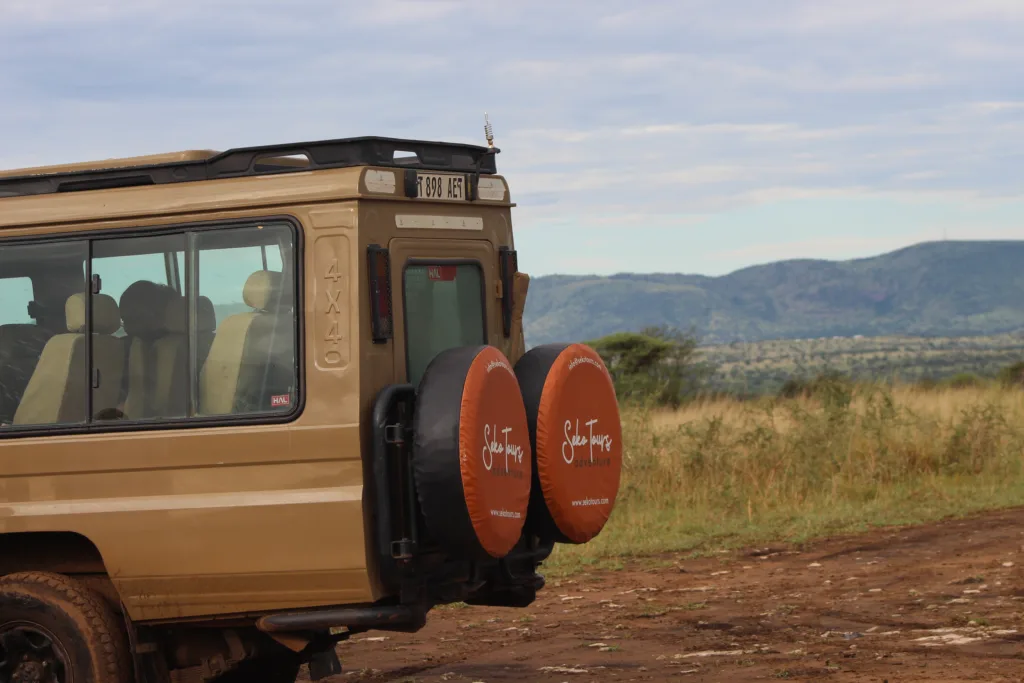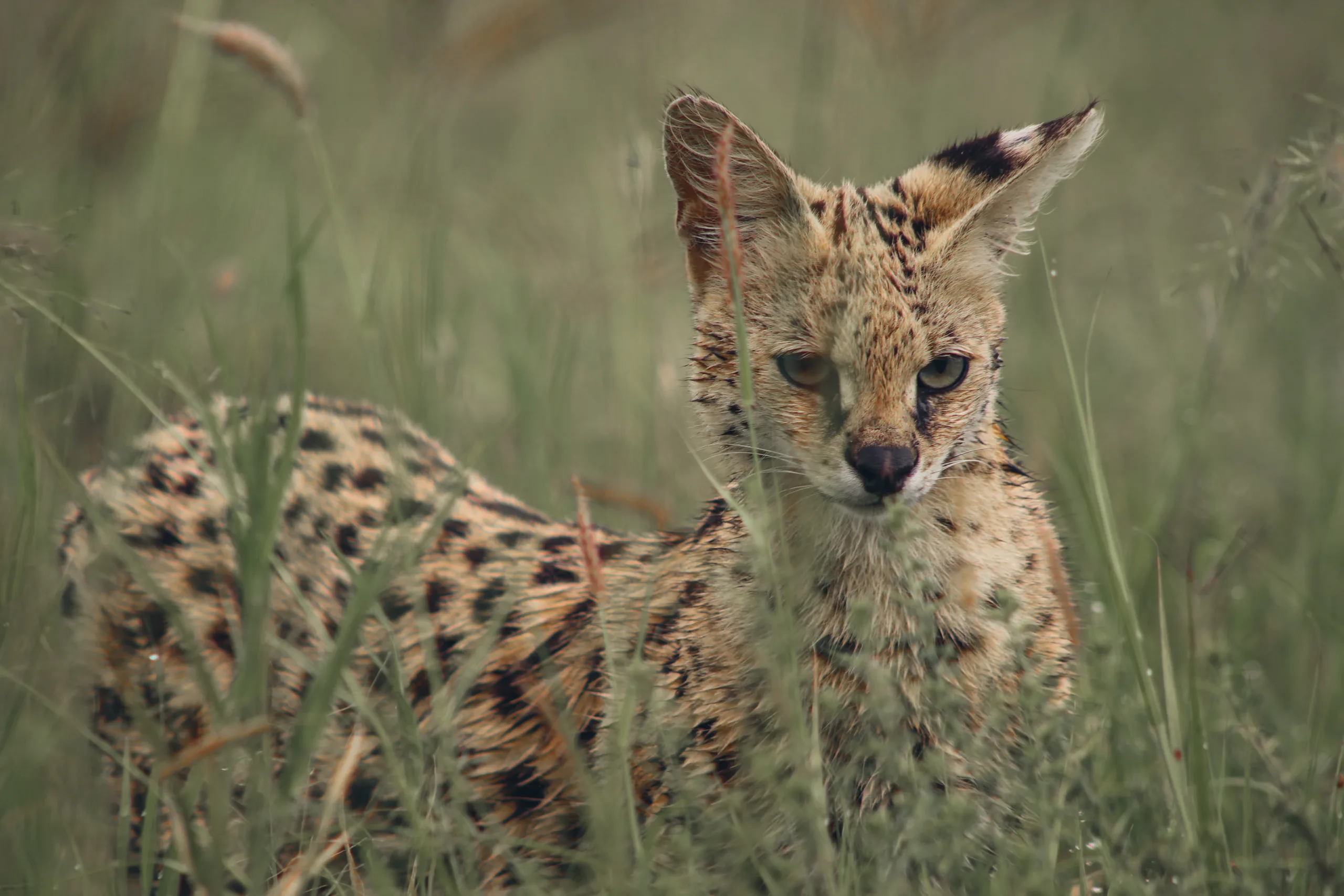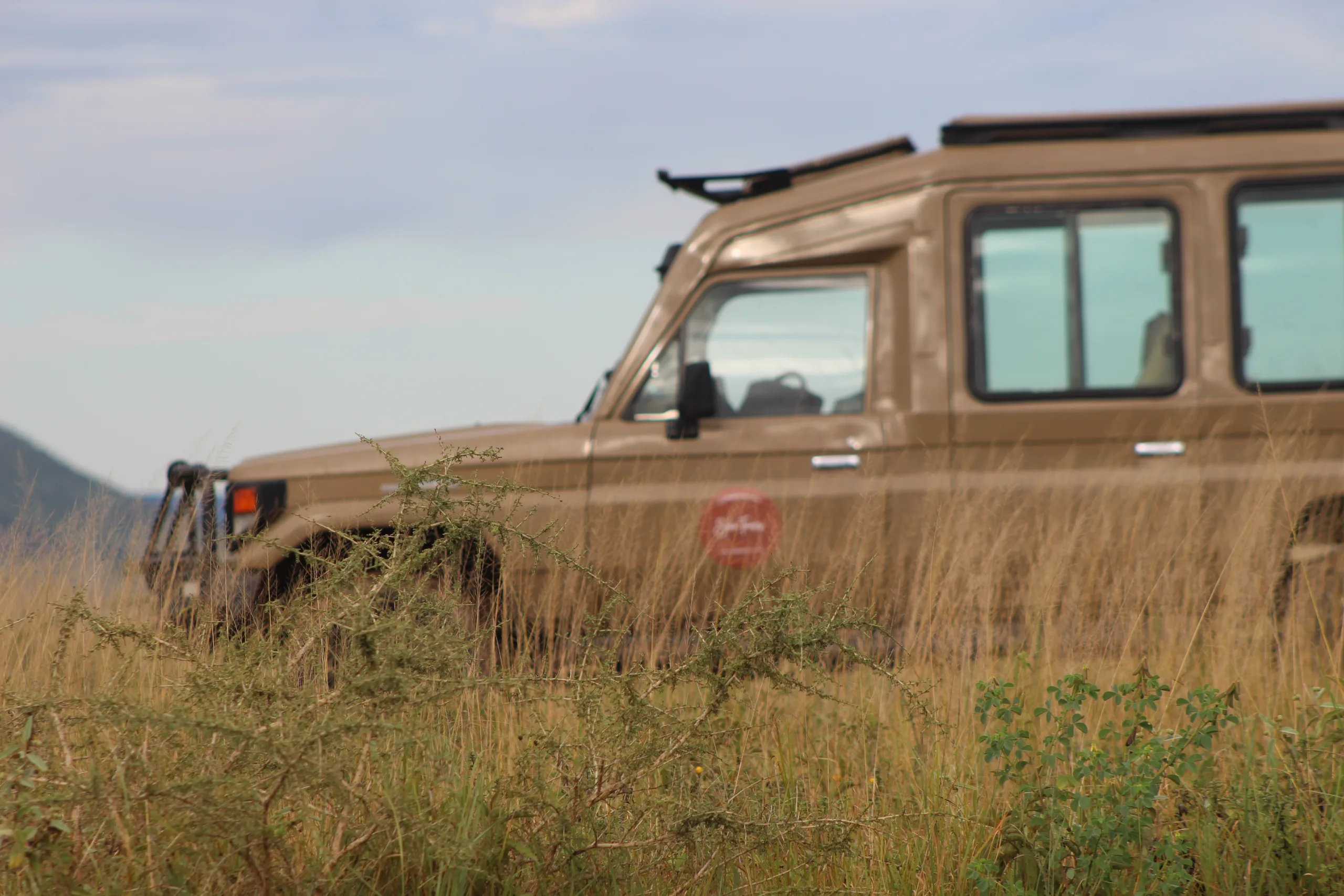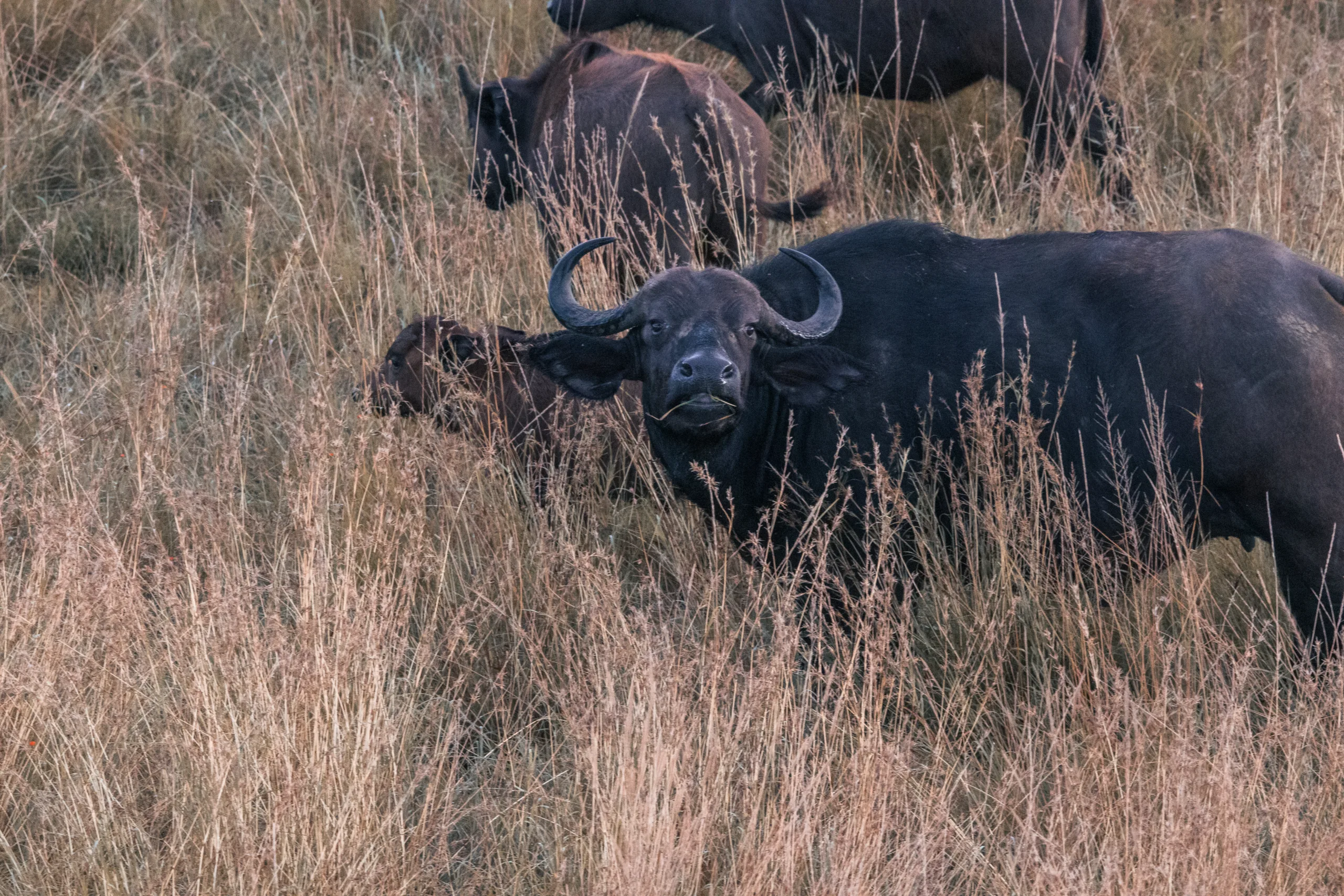Before I went on my first African safari, I had no idea what to expect. I had seen the photos, sure—elephants silhouetted against golden sunsets, lions lounging in tall grass, zebras moving in herds. But what I didn’t understand was how life-changing the experience would be.
I went to Tanzania, and by the time I left, I knew I’d never see the world the same way again. The wild animals, the landscapes, the silence of the savannah in the early morning—it was more than a vacation. It was a complete reset. But here’s the thing: safaris are not one-size-fits-all, and they come with a learning curve.
This guide is for you if it’s your first time, or you’re planning your first African safari and feeling overwhelmed. I’ll walk you through everything I wish I had known: when to go, what to pack, how much to budget, and how to make it the trip of a lifetime—with a special focus on Tanzania, but tips that apply across the African continent.
Think of me as your safari-savvy travel buddy who’s done it before and wants to make sure your experience is smooth, safe, and unforgettable.
In this post, you'll find...
TogglePlanning Your First Safari: What You Need to Know
Planning an African safari can feel exciting—but also overwhelming. There are dozens of African countries, each with different wildlife, landscapes, and seasons. There are group tours, luxury lodges, budget camps, and so many buzzwords: private reserves, guided safaris, bush flights, and more. Don’t worry. I’m going to break it down so you know exactly how to start planning your first safari with confidence.
Choosing the Right Destination
There’s no “best” country for safari—just the best one for you. I chose Tanzania, and I’d recommend it in a heartbeat. It’s home to the Serengeti, the Ngorongoro Crater, and part of the famous Great Migration, where over a million wildebeest and zebra move across the land each year.
But there are other great choices too:
- South Africa: Easy to travel in, great for first-time safari-goers, with iconic parks like Kruger National Park and many private reserves. You can combine safari with city life in Cape Town or wine tasting in Stellenbosch.
- Kenya: Best known for the Maasai Mara and rich cultural experiences with the Maasai people.
- Botswana: More remote, quieter, and focused on high-end, low-impact safari camps.
- Zimbabwe & Zambia: Excellent for walking safaris, river safaris, and proximity to Victoria Falls.
My tip: Start with one region. If you’re curious about East Africa, choose Tanzania or Kenya. For Southern Africa, consider South Africa or Botswana. Each offers a completely different experience, and all are incredible in their own right.
When Is the Best Time to Go?
The best time for a safari depends on what you want to see—and your tolerance for crowds or rain. Here’s how it breaks down:
🌞 Dry Season = Best Wildlife Viewing
- Dry season typically runs from June to October.
- Water is scarce, so animals gather at water sources, making game viewing easier.
- Skies are clear, roads are better, and it’s peak season—so prices are higher.
🌧 Rainy Season = Green, Cheaper, and Baby Animals
- The rainy season (also called the green season) happens from November to May.
- Landscapes are lush, birdwatching is excellent, and it’s a great time for photography.
- You’ll find fewer tourists and lower safari costs, but some roads may be muddy or impassable.
- It’s also calving season, especially in Southern Serengeti, when thousands of baby wildebeest are born.
Other Things to Consider:
- Winter months in Africa are June–August. It’s cooler, especially in the early morning and evening.
- High season = July, August, and early September. You’ll need to book far in advance and pay premium prices.
- The best value can be found during shoulder months like May or early November.
How to Book: Tour Operators vs. DIY
Now comes the big decision: how do you actually book your safari?
There are two main routes: working with a trusted safari tour operator, or planning everything on your own. I’ve done both styles of travel before, but for my first African safari, I chose to go through a tour company. And honestly? That was the best decision I could have made.
Option 1: Book Through a Safari Tour Operator
This is what I did—and what I’d recommend for your first African safari.
I went with Seko Tours, a locally run safari company based in Tanzania, and they made my 12-day trip completely seamless—from the moment I landed at Kilimanjaro Airport to the final goodbye at the beach in Zanzibar.

Their team handled all the logistics: the park permits, accommodation bookings, safari vehicles, private guide, domestic flights, and even meal preferences and laundry services at the lodges. All I had to do was show up with my bags, my camera equipment, and a sense of wonder.
Here’s why I liked Seko Tours—and why I recommend them:
- They offer personalized itineraries based on your travel style and budget. Whether you’re after a luxury safari, a photo safari, or a honeymoon beach and safari combo, they build everything around you.
- They specialize in Tanzania safari + Zanzibar beach packages, which is what I did. We spent 9 days visiting places like the Serengeti, Ngorongoro Crater, and Tarangire, then flew to Zanzibar for 3 days of beach relaxation and culture in Stone Town.
- Their guides are outstanding. My guide, Freddy, was knowledgeable, patient, funny, and genuinely passionate about wildlife conservation and local culture. He spotted things I would’ve never seen and made me feel completely safe every step of the way.
- They support local communities and prioritize hiring local talent, which was important to me. You can feel their commitment to ethical, responsible tourism.
The biggest pros of using a tour operator like Seko Tours:
- Stress-free planning: no second-guessing transfers, park fees, or bush flights.
- Local insight: You get access to the kind of behind-the-scenes knowledge only local experts can provide.
- Time-saving: They handle everything, so you’re not spending hours comparing lodge reviews or trying to figure out the best time of year to visit each park.
- Personal safety: In remote areas, having experienced help on call is reassuring.
A potential con is that it can appear more expensive upfront compared to planning it yourself—but when you add up all the moving parts (lodging, food, park fees, guides, transport), it’s often the best value for what you get. And most good operators—like Seko—offer tiered pricing options depending on your style: budget, mid-range, or luxury.
Option 2: Book Lodges Yourself + Hire Guides
If you’re a confident, experienced traveler or you’re trying to keep costs low, you can piece together a safari yourself. This might involve:
- Booking stays directly at safari lodges or safari camps
- Arranging day tours through local operators once you’re on the ground
- Hiring a private guide for specific days or parks
- Managing your own transport, possibly including bush flights or rental cars
- Researching park rules, seasonal closures, and fee structures in advance
The pros:
- More control over your budget—you choose every element.
- More flexibility—if you’re the type who likes to leave room for spontaneity.
- Potential for unique local experiences—especially in lesser-known game reserves or when staying in small family-run camps.
But the cons can be major:
- Planning is time-consuming and detail-heavy.
- If something goes wrong (like a missed flight or permit issue), you don’t have backup support.
- It’s not always cheaper once you factor in hidden costs like national park entry fees, fuel, or last-minute logistics.
- You may miss out on hidden gems or animal sightings without a trained guide’s help.
My advice?
If it’s your first safari, go with a company like Seko Tours that knows the terrain inside and out. Let the experts handle the logistics so you can fully focus on the magic of the safari experience—because trust me, when you’re surrounded by lions in the Serengeti at golden hour, the last thing you want to worry about is check-out times or GPS signal.
What to Expect Each Day on Safari
If you’ve never been on safari before, it’s hard to imagine what the daily rhythm feels like. I went in thinking it would be action-packed 24/7—like we’d be chasing lions across the savannah every hour. But the reality was more peaceful, more meditative, and honestly… more magical than I expected.
Here’s what a typical day looks like on a guided safari experience in Tanzania or most other African countries:
Daily Routine: Game Drives & Downtime
⏰ Early Morning Wake-Up
Each day starts early. I mean really early—think 5:30 or 6:00 AM. You’ll have a wake-up call with coffee or tea brought to your tent or room (a small luxury that feels amazing), and then head out for your early morning game drive just after sunrise.
Why so early? Because this is when the wild animals are most active. The air is cool, the light is golden, and there’s a stillness across the land that’s hard to describe. It’s also your best chance to see predators like lions, leopards, or hyenas returning from a night hunt.
🍳 Late Breakfast & Midday Break
After the morning drive, you’ll return to your safari camp or lodge for breakfast or brunch around 10:00–11:00 AM. Then it’s downtime. The middle of the day is hot—animals rest, and so do you. Some people nap, read, swim, or take photos around camp. I usually used this time to clean camera gear, charge devices (especially in camps powered by solar power), and upload photos to clear memory cards.
🚙 Late Afternoon Game Drive
Around 3:30 or 4:00 PM, you’ll head out again for your late afternoon or evening game drive. As the sun sets, animals begin to stir. Herds come to water sources, elephants wander back to the riverbanks, and big cats start prowling again. These were some of my favorite moments—the colors, the quiet, the sense that you’re witnessing nature exactly as it’s meant to be.
✨ Dinner & Fireside Stories
You’ll usually return just after dark (unless you’re doing a night drive, which some private reserves allow), clean up, and enjoy dinner with other guests or your guide. Then it’s fireside chats, star-gazing, or just crawling into bed early. You’ll be surprised how tired you feel after a full day—even though much of it is spent just watching.
What Game Drives Are Really Like
At first, I imagined game drives to be constant action—but they’re more like slow, suspenseful treasure hunts. Some days you’ll see elephants 10 minutes in. Other times, you’ll drive for hours before you spot anything. That’s why having a knowledgeable safari guide is everything—they understand animal behavior, track footprints, and even follow distant calls or bird alarm signals.
You’ll spend most of the drive in a 4×4 safari vehicle, either shared or private, depending on your trip style. The seats are elevated, usually open-air or with a pop-up roof. Some drives last 2–4 hours, while all-day safaris (with packed lunches) are common in places like the Serengeti or Kruger National Park.
If you’re lucky enough to do a walking safari, that’s a completely different experience. You’ll be on foot with a trained armed guide, learning to read the land up close—animal tracks, dung, plants, even sounds. It’s slower and quieter, but incredibly immersive. It made me feel small in the best possible way.
Pro Tip: Every safari day is different. You might see a leopard lounging in a tree one day and witness a lioness hunt the next. The key is to stay open, be patient, and soak up the experience—not just the wildlife, but the natural beauty, the silence, the connection to something wild and ancient.
Packing & Clothing Tips for Your First African Safari
Packing for a safari is not like packing for a beach vacation or a city trip. You’re not dressing to impress—you’re dressing to blend in, stay comfortable, and protect yourself from the elements. That doesn’t mean you have to sacrifice style entirely—but you do have to think practically.
What to Wear
Let’s start with the basics. Most safaris involve long hours outside—often in open-air safari vehicles, with lots of dust, sun, and bugs. So what’s the ideal safari outfit?
Stick to neutral colors like olive green, tan, beige, and khaki. These help you blend into the natural habitat, making wildlife feel less threatened and keeping you less visible to tsetse flies, which are attracted to dark colors like black and navy. (I learned this the hard way after one too many bites.)
Your packing MVPs will be:
- Long-sleeved shirts or long sleeves made from breathable fabrics
- Lightweight long pants for sun and insect protection
- A warm layer like a fleece or jacket for chilly early morning game drives
- A packable rain jacket if you’re visiting during the rainy season
- A wide-brimmed hat, sunglasses, and insect repellent with DEET or a natural formula
- Comfortable closed-toe shoes or light hiking boots for walking safaris
Avoid:
- Bright colors or prints
- Camouflage clothing (often restricted or frowned upon in many African countries)
- Shorts or tank tops—they’re fine at the lodge, but not practical on a drive or walk
- Heavy jeans or non-breathable fabrics
The goal is to be cool, covered, and comfortable from sunrise to sunset—whether you’re sitting in a safari vehicle or tracking wildlife on foot.
What to Pack
Besides clothes, here are essentials I highly recommend:
- Prescription medication (including malaria pills if advised)
- Basic first aid kit
- Bottled water or a reusable filter bottle (most lodges provide this too)
- Travel-size toiletries (many lodges run on solar power, so limit electronics and water use)
- A few quick-dry outfits you can wash—most places offer laundry services, which lets you pack light
- Credit card and some local currency or US dollars for tipping
- Soft-sided luggage if you’re flying on small planes to private reserves
Don’t forget camera gear, a long zoom lens, extra memory cards, and charging cords! Dust-proof bags are also a good idea for electronics.
👉 Read my full post on exactly what clothes to pack for safari in Tanzania for practical examples, outfit suggestions, and real photos from my trip!
Budgeting & Safari Costs: What You’re Really Paying For
One of the biggest questions people ask me is: “How much money do I need for an African safari?” The short answer? It depends. The longer answer? Safaris are not cheap—but they are worth every penny if you know where your money is going and how to get the best value.
What Influences Safari Prices
A safari isn’t just a hotel stay—it’s a complete, immersive package. You’re paying for so much more than a bed. Here’s what’s usually included in your rate:
- Accommodation (at safari lodges, tented camps, or private houses)
- All meals and drinks, often including wine and sundowners
- Twice-daily game drives in a safari vehicle, with a certified safari guide
- Park entrance fees and conservation levies
- Transfers and transport, sometimes including bush flights
- Services of the lodge manager, housekeeping, chefs, and staff members
- Laundry services (a nice bonus that helps you pack light)
- 24/7 support if you’re traveling with a tour operator
Now, the price can vary widely depending on:
- The time of year (high season = higher prices)
- Whether you’re in a private reserve or public game reserve
- The level of luxury (some camps like Royal Malewane charge $1,500+ per night, while others are closer to $300–$500 per night)
- How remote the location is (the more secluded, the higher the cost of logistics)
- Whether you have a private guide or join a group tour
It might seem like a lot upfront, but when you break it down, you’re getting a lot of value.
Budget Tips & Getting the Best Value
Here’s how I recommend approaching your first time safari from a budget perspective:
- Decide your priorities: Is it important to have a luxury tent? A private vehicle? Or is wildlife the main goal, and you’re happy with simpler lodging?
- Go during shoulder season (May or November): The weather is still good, crowds are smaller, and safari costs are lower.
- Combine destinations smartly: Many operators like Seko Tours offer combo itineraries that include both safari and beach (like Zanzibar) for a more balanced budget.
- Avoid unnecessary extras: Fancy spa treatments and over-the-top souvenirs can add up quickly.
And don’t forget: even if you’re paying in US dollars, it’s always good to bring local currency for tips, purchases in local villages, or emergencies.
Pro Tip: Don’t skimp on travel insurance, especially when traveling in remote areas with small planes and unpredictable weather. It’s one of the best things you can do to protect your trip of a lifetime.
Photography & Camera Gear Tips
You don’t have to be a professional photographer to capture incredible safari moments—but you do need the right mindset and some essential gear. A safari isn’t just visually stunning—it’s emotionally powerful. Having great photos helps you relive those moments and share them with others.
Capturing the Moment
Before my safari, I spent weeks debating whether to bring my DSLR or just use my phone. In the end, I brought both—and I’m glad I did.
Here’s what I packed:
- A mid-range DSLR camera (Canon M50 Mark II)
- A 150mm – 600mm zoom lens (you need at least 200mm, but ideally 300mm or more)
- Extra memory cards (bring more than you think you’ll need!)
- Spare batteries and a portable charger
- A dustproof bag to protect gear inside the safari vehicle
Your smartphone will work beautifully for landscapes, portraits, and video—but when it comes to wildlife at a distance, a real camera with a zoom lens is a good idea.
If you’re traveling with a group tour, you might have to share space for your camera bag. Keep it compact and organized. If you’re lucky enough to have a private vehicle, you’ll have more room to set up your gear between sightings.
Best Advice for Wildlife Photography
- Shoot during early morning and late afternoon drives—this is when the light is golden and animals are active.
- Be patient. Sometimes the best photos come after waiting 20–30 minutes at one spot.
- Don’t get caught up in just taking pictures. Take time to lower the camera and just watch.
- Ask your safari guide to position the vehicle with the sun behind you for better lighting.
- Bring a lens cloth—dust is everywhere.
And remember: you don’t need fancy gear to take a meaningful photo. The emotion, the timing, and the story matter more than the megapixels.
Cultural Sensitivity & Ethical Safari Travel
Going on safari isn’t just about the wildlife—it’s also about the people. You’re visiting regions where tourism plays a major role in the economy, but where daily life can look completely different than what you’re used to in your home country.
Showing respect for local communities, customs, and environments is one of the best ways to make your safari experience meaningful—for everyone.
Respecting Local Communities & Culture
Whether you’re passing through a local village, shopping at a roadside stand, or staying at a safari camp run by a local family, remember that you’re a guest.
Here’s how to travel respectfully:
- Dress modestly when not on safari—especially if you visit local communities or towns.
- Ask before taking photos of people or private homes. It’s not just polite—it’s essential.
- Tip generously. Many staff members rely on tips as part of their income. You can tip in local currency or US dollars (smaller denominations are ideal).
- Learn a few words in Swahili or the local language—it goes a long way in showing appreciation.
Ethical Wildlife Experiences
Not all safari companies operate the same way. Some offer unethical activities—like petting cheetahs or riding elephants—that harm the animals and mislead travelers.
To ensure you’re supporting conservation-focused tourism:
- Avoid experiences that involve touching wild animals.
- Choose companies (like Seko Tours) that support natural habitat preservation and hire local staff.
- Ask your lodge manager or safari guide about their conservation efforts.
Pro Tip: Tourism, done right, is a powerful way to support workers’ salaries, protect endangered species, and empower local communities. Be part of that positive impact.
Final Advice From a First-Timer Turned Safari Enthusiast
When I first started planning my first African safari, I had no idea what I was doing. I worried I’d forget something, book the wrong lodge, or show up unprepared. But looking back, none of those fears mattered once I was there—surrounded by elephants at dawn, hearing lions at night, and watching the sun rise over the African continent.
If I could give you just one piece of best advice, it would be this: slow down and stay present. Don’t rush your itinerary. Don’t try to pack in too many parks or cross off a checklist of animals. Give yourself enough time to just be there—because the magic of safari isn’t just in what you see, but how it makes you feel.
Trust your safari guide. Ask questions. Tip your staff members well. Say yes to the walking safaris. Say yes to sitting in silence while a herd of elephants passes you by.
And when the next day comes and you’ve got dust on your boots, mosquito bites on your arms, and hundreds of photos in your memory cards—you’ll realize you’ve just had the trip of a lifetime.








